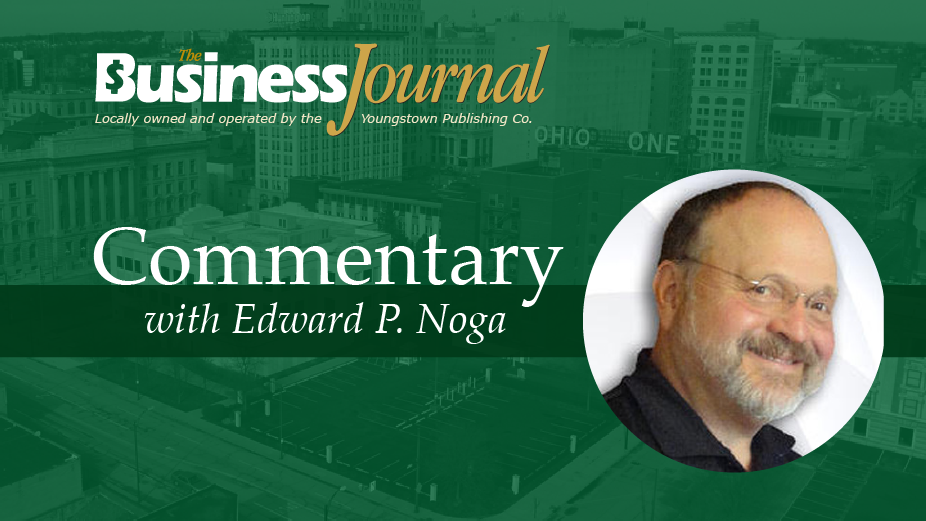By Edward Noga
YOUNGSTOWN, Ohio – If you have ever played cards, you know the phrase, “Show your hand.”
The phrase refers to the end of a round when someone lays down his cards because he thinks he has a winning hand. “Show your hand” is card-playing lingo for asking the other players to display what cards they’re holding.
Turn back the calendar to April 18, 1946. Jackie Robinson, the first Black player in Major League Baseball, hit a three-run homer for the Montreal Royals, a minor league team. Jackie’s teammates who scored on the home run crossed home plate and went straight to the dugout. George “Shotgun” Shuba, Jackie’s teammate and a native of Youngstown, was on deck and reached out to Jackie to shake his hand following his three-run blast.
As they say, the rest is history. Fast forward to July 17, just a few days away. The dedication of the Robinson-Shuba memorial is scheduled to be part of the opening of this year’s Youngstown State University Festival of the Arts at Wean Park between the Covelli Centre and the Youngstown Foundation Amphitheater.
On June 27, the city of Youngstown observed the 225th anniversary of John Young stepping out of his boat on the Mahoning River near Spring Common. A bust of John Young marks the spot where Mahoning and Oak Hill avenues intersect near downtown.
Little did John Young or those who followed him here know what this area would become. With blood, sweat and tears, they surveyed and cleared land, built the early homes and started the first farms that welcomed newcomers to Young’s town.
When I grew up here, folks often said that they could tell a steelworker’s hands because of the grime and callouses from the rough and sometimes dangerous work they did in the miles and miles of steel mills that lined the Mahoning River.
I have a classmate, Father Terry Hazel (pastor emeritus of St. Michael Parish in Canfield), who is the diocesan chaplain for the hearing impaired. Over the years, I have watched him use his hands to communicate with them. His hands “speak” carefully to those who respond with like gestures.
Think about all that we do with our hands. The last time you cut your grass, worked in your flower or vegetable garden, played tennis or golf, made breakfast, got gasoline at the service station, picked up a prescription, used your cellphone, took a shower, washed your car, prayed to the Almighty, drove your vehicle, opened your mail, took out the trash; we use our hands over and over again.
Then came the pandemic. Our hands were highlighted in a totally different way as we were told that they could be the vehicles for transmitting the COVID-19 virus.
We were warned that the wrong touch could bring the virus to us personally or to someone else. A new ritual entered our lives and became important because of social distancing, wearing a mask and eventually getting vaccinated.
Even now, as we slowly get back to the new normal, medical professionals tell us that hand hygiene is as important as ever. Included in many of their comments is a reminder that good hand hygiene has always been promoted as part of a healthful lifestyle. Sadly, it has not often been taken seriously enough.
Who knows what went through George Shuba’s mind the day he was on deck waiting to enter the batter’s box after Jackie Robinson? For sure, we can surmise that he was aware of some of the racial tension that greeted Robinson’s debut in Montreal. In addition, he might have spent a few moments being reminded that such racial tension was not just in baseball but in many, if not all, aspects of life.
Whatever was going through his mind was interrupted with the crack of the bat as Jackie Robinson sent a home run over the fence, scoring three runs.
Wouldn’t we love to know what Shuba was thinking as Robinson rounded third base and headed for home plate? Whatever was in his mind somehow translated into him leaving the on-deck circle to reach out and shake his hand. Congratulations Jackie!
And now, “Congratulations George” for reminding us of whom we really are. His handshake is memorialized in the form of a statue, complementing the photo of the event.
In a recent interview, Ernie Brown, co-chairman of the project, commented that the statue will be a great reminder for generations that “race should never divide us on the baseball field or anywhere else.”
Greg Gulas, also co-chairman of the project, said that the placement of the handshake memorial in Youngstown is appropriate. There is “no better place [for the memorial] where George learned and embraced the values reflected in the historic Robinson-Shuba handshake,” he said.
As we attend the memorial dedication and clap our hands in approval, or watch it on TV or read about it in newsprint or click onto the story on our phone or computer, we will use our hands.
Remember, the way we act toward and treat each other will be the ultimate way we “show our hand” to the world.
